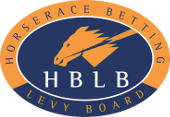Wednesday 18th December 2013
Levy Board publishes Codes of Practice for 2014
The Horserace Betting Levy Board (HBLB) has published the 36th edition of the Codes of Practice on equine disease, in preparation for the 2014 equine breeding season.
The 2014 Codes are available online at codes.hblb.org.uk and can also be downloaded in PDF format for printing or viewing offline.
Applying to all breeds of horse and pony, and to both natural mating and Artificial Insemination (AI), the Codes are an essential guide for the prevention and control of the following equine diseases which represent a potential major threat to equine breeding:
• Contagious equine metritis (CEM)
• Equine viral arteritis (EVA)
• Equine herpesvirus (EHV)
• Equine coital exanthema (ECE)
• Equine infectious anaemia (EIA)
• Dourine
• Guidelines on strangles
• Guidelines on artificial insemination (AI)
For each disease there are sections which describe transmission and clinical signs, as well as advice on prevention, diagnosis and control of infection. The Codes explain the notification requirements that apply for the four diseases that are notifiable by law: CEM, EVA, EIA and dourine.
The Codes of Practice are reviewed annually by an expert Sub Committee of HBLB’s Veterinary Advisory Committee. The Sub Committee includes representatives of:
• Thoroughbred breeders in Britain, Ireland, France, Germany and Italy
• The non-thoroughbred sector
• Defra
• Specialist equine veterinary practitioners
• Scientists expert in infectious disease.
Chris Rea, Chairman of the Codes of Practice Sub Committee, said:
“For 2014 we have revised the sections on EHV and Strangles to clarify the process of diagnosis, and updated the contact details for the Animal Health and Veterinary Laboratories Agency (AHVLA).
“The diseases covered in the Codes are all highly contagious. If not contained and treated appropriately, an isolated case might quickly escalate to a local or national outbreak. This is not just a Thoroughbred issue – these diseases can affect any kind of horse or pony whether or not involved in breeding. Depending on the disease and the severity of the outbreak, the consequences can range from temporary movement restrictions to compulsory slaughter. The horse welfare implications are obvious, with owners also having to face economic repercussions.
“The whole equine sector should comply with the recommendations in the Codes, for the benefit of their horses and ponies.”
Further detail on recent and current research on equine infectious disease is available on a new online resource at racehorsehealth.hblb.org.uk.
The 2014 Codes are available online at codes.hblb.org.uk and can also be downloaded in PDF format for printing or viewing offline.
Applying to all breeds of horse and pony, and to both natural mating and Artificial Insemination (AI), the Codes are an essential guide for the prevention and control of the following equine diseases which represent a potential major threat to equine breeding:
• Contagious equine metritis (CEM)
• Equine viral arteritis (EVA)
• Equine herpesvirus (EHV)
• Equine coital exanthema (ECE)
• Equine infectious anaemia (EIA)
• Dourine
• Guidelines on strangles
• Guidelines on artificial insemination (AI)
For each disease there are sections which describe transmission and clinical signs, as well as advice on prevention, diagnosis and control of infection. The Codes explain the notification requirements that apply for the four diseases that are notifiable by law: CEM, EVA, EIA and dourine.
The Codes of Practice are reviewed annually by an expert Sub Committee of HBLB’s Veterinary Advisory Committee. The Sub Committee includes representatives of:
• Thoroughbred breeders in Britain, Ireland, France, Germany and Italy
• The non-thoroughbred sector
• Defra
• Specialist equine veterinary practitioners
• Scientists expert in infectious disease.
Chris Rea, Chairman of the Codes of Practice Sub Committee, said:
“For 2014 we have revised the sections on EHV and Strangles to clarify the process of diagnosis, and updated the contact details for the Animal Health and Veterinary Laboratories Agency (AHVLA).
“The diseases covered in the Codes are all highly contagious. If not contained and treated appropriately, an isolated case might quickly escalate to a local or national outbreak. This is not just a Thoroughbred issue – these diseases can affect any kind of horse or pony whether or not involved in breeding. Depending on the disease and the severity of the outbreak, the consequences can range from temporary movement restrictions to compulsory slaughter. The horse welfare implications are obvious, with owners also having to face economic repercussions.
“The whole equine sector should comply with the recommendations in the Codes, for the benefit of their horses and ponies.”
Further detail on recent and current research on equine infectious disease is available on a new online resource at racehorsehealth.hblb.org.uk.
